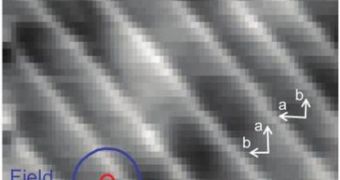Scientists from the Stanford University say that they have discovered a new way to look for the origin of superconductivity. This is a state that certain materials can take, in which they conduct electricity flawlessly, without allowing for losses to occur. The characteristic is very sought-for in scientific circles, as many experts believe it may hold the key to developing advanced electronic devices. But the origins of the phenomenon are still hazy, and building new technologies on “mysterious” technologies is not feasible. This is where the new study comes in.
The target of the investigation was a class of ceramic materials known as pnictides. The SU team conducted a series of experiments designed to reveal how superconductivity appears in these materials. For this purpose, they took advanced images of iron-based superconductors. Based on these studies, the group was able to extract telltale clues as to what the origin of the phenomenon might be. They say that the research revealed several interesting aspects related to the way electrons flow through these materials. The team explains that superconducting currents in certain types of pnictides tend to flow mostly along the edges of the crystal grains that make up the superconductors themselves.
The investigation provides new hope that conventional metal conductors, which have very poor performances when it comes to facilitating electron flow, will soon be replaced. The work is detailed in two scientific studies, which both appear in the latest issue of the esteemed scientific journal Physical Review B. Physicists believe that the new knowledge could also pave the way to obtaining new and more advanced superconducting compounds that could be manufactured at costs that would make them competitive with existing conductors. If this happens, then the electronics industry would be stimulated in turning to the new materials.
John Tranquada, a physicist at the US Department of Energy's (DOE) Brookhaven National Laboratory (BNL), says in a Viewpoint appearing in the current issue of APS Physics that the new work may prove fundamental to the development of better, more efficient high-temperature superconductors as well. He congratulates the SU team on the discovery of the connection between crystal boundaries and superconductivity, but adds that additional research needs to take place before scientists can get to work on producing the new materials.

 14 DAY TRIAL //
14 DAY TRIAL //